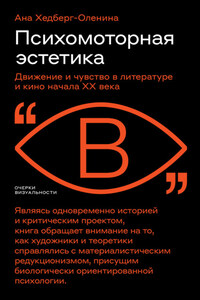Cover image: Rick Landers
Cover design: Rick Landers
This book is printed on acid-free paper.
Copyright © 2015 by John Wiley & Sons, Inc. All rights reserved
Published by John Wiley & Sons, Inc., Hoboken, New Jersey
Published simultaneously in Canada
No part of this publication may be reproduced, stored in a retrieval system, or transmitted in any form or by any means, electronic, mechanical, photocopying, recording, scanning, or otherwise, except as permitted under Section 107 or 108 of the 1976 United States Copyright Act, without either the prior written permission of the Publisher, or authorization through payment of the appropriate per-copy fee to the Copyright Clearance Center, 222 Rosewood Drive, Danvers, MA 01923, (978) 750–8400, fax (978) 646–8600, or on the web at www.copyright.com. Requests to the Publisher for permission should be addressed to the Permissions Department, John Wiley & Sons, Inc., 111 River Street, Hoboken, NJ 07030, (201) 748–6011, fax (201) 748–6008, or online at www.wiley.com/go/permissions.
Limit of Liability/Disclaimer of Warranty: While the Publisher and author have used their best efforts in preparing this book, they make no representations or warranties with the respect to the accuracy or completeness of the contents of this book and specifically disclaim any implied warranties of merchantability or fitness for a particular purpose. No warranty may be created or extended by sales representatives or written sales materials. The advice and strategies contained herein may not be suitable for your situation. You should consult with a professional where appropriate. Neither the publisher nor the author shall be liable for damages arising herefrom.
For general information about our other products and services, please contact our Customer Care Department within the United States at (800) 762–2974, outside the United States at (317) 572–3993 or fax (317) 572–4002.
Wiley publishes in a variety of print and electronic formats and by print-on-demand. Some material included with standard print versions of this book may not be included in e-books or in print-on-demand. If this book refers to media such as a CD or DVD that is not included in the version you purchased, you may download this material at http://booksupport.wiley.com. For more information about Wiley products, visit www.wiley.com.
Library of Congress Cataloging-in-Publication Data:
ISBN 978-1-118-77198-3 (pbk); ISBN 978-1-119-04470-3 (ebk); ISBN 978-1-119-04496-3 (ebk)
This is not your grandmother's graphic design. Nor is it your older brother's or sister's. The rate of speed at which the practice moves is cyclonic. All you have to do is look around to see that the world of design involves media that were inconceivable when grandmas were starting their careers.
– From the Preface of 4th Edition
This brand new edition represents a brand new era of graphic design, which is part graphic, almost entirely digital, and decidedly transitional. One of the proposed titles for this book was Becoming an Integrated Designer because traditional graphic and relatively new digital design are indeed merging into one practice. Likewise, it could have been called Becoming an INTEGRAL Designer because it is integral for practioners to be prepared for the present and the future, having fluency in a variety of media and platforms – those that exist now and those yet to be discovered.
Building on the past successes of Becoming A Graphic Designer with Teresa Fernandez and Becoming a Digital Designer with David Womack, this new edition addresses the demands of starting a design career in the early twenty-first century. This new volume is not a revision but, rather, a complete restructuring of form and content. All the interviews were done specifically for this edition, and the international coverage is unique as well. Starting with a new definition of design as a multiplatform activity that involves aesthetic, creative, and technical expertise, this edition will guide the reader through print and digital design, emphasizing the transitional and improvisational methods so prevalent today. Through over 80 interviews and essays that address inspiration, theory, and practice, the reader will come to understand that field once narrowly known as “graphic design” is much richer and more inviting of thinkers, managers, and makers.
Traditional graphic design and typography platforms (i.e., print) are important yet now comprise a smaller portion of this book. After all, many of the print platforms are now gone, near obsolescence, or subsumed. Digital is, however, an umbrella term for all manner of graphic design, information design, interaction design, and user experience, where the computer is the tool of today. Every “communication designer” must be able to use digital tools whether he or she designs for print magazines or iPhone apps. Also, since the 4th edition, the fact of design entrepreneurship – or “start-up” culture – is now reaching new levels of ubiquity and accessibility. Education is changing to better integrate new technologies: graphic, typographic, product, interaction, branding, and other subgenres. This excerpt from the previous edition still resonates:








